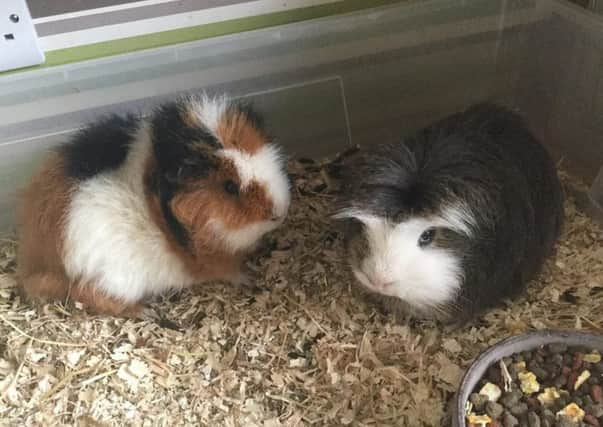Guinnea Pigs are curious animals


If outside, they need a secure, robust, hutch so they can’t get out and predators can’t get in.
They also need an area to use as a hideaway if they perceive a potential threat.
Advertisement
Hide AdAdvertisement
Hide AdSoft straw should be used in the bedding area along with dust free wood shavings.
Whenever the climate is favourable, a large run should be provided so they can enjoy the grass as they are natural grazers.
In winter extra bedding is needed to keep them warm and the hutch should be moved into a protected place like a shed which is free from winter draughts.
Guinea Pigs kept inside need the largest practical indoor cage. The minimum size to keep two Guinea Pigs is 120cm long by 60cm wide, but more space is always preferable.
Advertisement
Hide AdAdvertisement
Hide AdIndoor Guinea Pigs also need somewhere safe to hide and plenty of things to investigate, being curious animals.
A hay rack should be provided to keep fresh hay off the floor so they can’t soil the food.
Hay is the main part of their diet along with small amounts of Guinea Pig pellets and fresh vegetables.
Never use rabbit food as it doesn’t contain the right amount of nutrition for Guinea Pigs.
Advertisement
Hide AdAdvertisement
Hide AdThey need plenty of Vitamin C, usually provided in fruit and vegetables, eg oranges and spinach. They must be provided with a water bottle and fresh water, changed daily.
Cleaning of the cage and run is essential. Droppings should be removed from the hutch every day.
A full clean and change of bedding is essential at least once a week to avoid any health issues. Dirty bedding can cause problems like Bumblefoot (swollen feet).